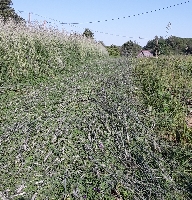Author: Līga Lepse, APP Institute of Horticulture
Climate change has become a social and political issue in recent decades, but especially in the last couple of years, when several important international agreements to mitigate climate change have been signed – the Paris Agreement, the Kyoto Protocol, the 2019 UN Climate Summit in New York. All these international documents and meetings are aimed primarily at reducing greenhouse gas (GHG) emissions.
As the LULUCF sector (land use, land-use change and forestry) is estimated to be responsible for 24% of direct GHG emissions globally, GHG mitigation actions in this sector could have a significant impact on the climate change process. It is estimated that the LULUCF sector in Latvia is responsible for 22,3 % of GHG emissions, which is also a significant percentage of the total GHG emissions[1]. By changing the technologies of soil treatment and crop production used in agriculture, there is an opportunity to reduce emissions of these gases and to attract GHGs in the atmosphere.
The contribution of agriculture to GHG emissions also results from the use of fossil fuels to power agricultural machinery. As the intensity of agricultural production increases, so does the use of fossil energy in the production of products - both as fuel and as energy-intensive products (pesticides and mineral fertilizers). It is estimated that the amount of fossil energy that is used to produce crops, is equivalent to approximately 20-30 % of the stored solar energy in these crops. According to Eurostat data and the proposed solutions, changing agricultural technologies and reducing the use of nitrogen fertilizers allow agriculture to contribute to the reduction of GHG emissions by directly reducing NO2 gas emissions from nitrification and denitrification.
One of the possible methods of agricultural production to reduce GHGs is the cultivation of catch crops and the creation of mulch from them. The use of roller crimper is recommended as an effective technological solution for creating mulch. In this context, the roller crimper technology contributes to CO2 capture in the soil, reduces the use of nitrogen (N) fertilizer and diesel fuel consumption for soil treatment processes.
A follow-up article will be available in a handbook on climate-friendly agricultural practices.
[1] Summary of the greenhouse gas inventory submitted in 2020, Riga, 2020 https://www.meteo.lv/fs/CKFinderJava/userfiles/files/Vide/Klimats/Majas_lapai_LVGMC_2020_seginvkopsavilkums.pdf
